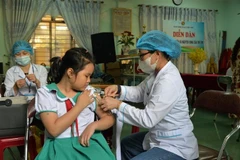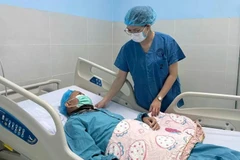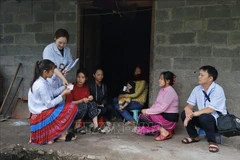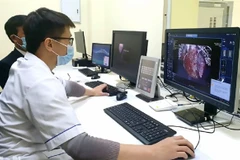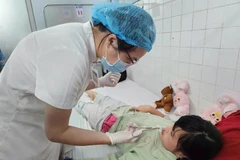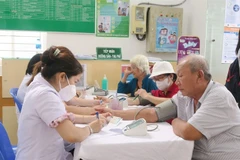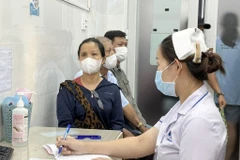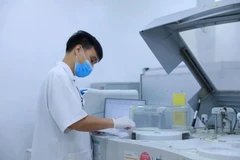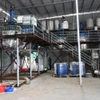Hanoi (VNS/VNA) - Hospitals andclinics in Vietnam have started implementing surveillance of nosocomialinfections and monitoring the hospital-infection control process, DeputyMinister of Health Nguyen Viet Tien said at a recent meeting.
Measures include the monitoring of hand hygienecompliance, hospital microbial surveillance and antibiotic resistance, step bystep standardisation of disinfection, hospital hygiene improvement, and diseaseprevention, Tien said at the meeting organised by the Health Ministry in Hanoithis week that aimed to implement the new Circular on hospital-infectioncontrol regulations.
The Ministry of Health has just issued CircularNo.16/2018 that regulates hospital-infection control, to replace the previousCircular No.18/2009.
Director of the Ministry ofHealth’s Medical Examination and Treatment Department Luong Ngoc Khue said according to the new circular,hospitals with over 150 beds must have a hospital-infection controldepartment, and hospitals with under 150 beds must have an infection controloffice with full-time staff.
“The head of the hospital mustbe fully responsible for hospital-infection control plans,” Khue said.
“Full-time supervisors,disinfectants and sterilisers must have Ministry of Health certificates ordegrees in hospital-infection control (with training time of three months).”
Khue added the new circularalso suggested hospitals seek investment and funding from different sources todevelop hospital sanitation measures and waste treatment under the professionalcontrol of the hospital-infection control department.
“The circular is an importantstep to determine hospital-infection control work as a key task of the healthsector.”
However, Deputy Minister ofHealth Nguyen Viet Tien acknowledged that the work of hospital-infectioncontrol in Vietnam still faced many challenges.
At some clinics, management hasnot yet fully understood the role and importance of hospital-infection controlwork, so investment has not been appropriate or effective, according to Tien.
“Human resource management forhospital-infection work is inadequate and weak in contributing to the effectiveprevention and control of antibiotic resistance, medical complications, and ofcontagious disease,” Tien said.
In particular, with thedevelopment of diseases in developing countries, including Vietnam, infectiousdiseases accounted for a high proportion with many newly-emerging diseasesbringing a high risk of death, occurring not only in communities but also inhospitals, such as influenza A (H5N1, H1N1, H7N9), MERS-CoV and Ebola,according to the deputy health minister.
This was one of the majorchallenges facing the health sector’s hospital-infection control work.
According to the Ministry ofHealth, the ratio of patients suffering from hospital-acquired infections in Vietnamranges from 4-8 percent of total patients being treated at hospitals.
In fact, there have been anumber of wide-spread cases, including the measles outbreak in 2014 thatinfected many children being treated at the Hanoi-based National Hospital ofPaediatrics.
In November, 2017, a hospital-acquiredinfection case at the Bac Ninh obstetrics and maternity hospital killed fourbabies, and many others were infected with various levels of severity.
In June 2018, many children inDien Bien Dong district in the northern mountainous province of Dien Bien werealso infected with measles after being treated at a district health clinic.
There are many risks ofinfection in hospitals, including from drinking water, toilets and medicalequipment. To ensure the hygiene and safety of patients, many hospitals haveinstalled soap, clean bed sheets and toilets to prevent infections.
Nguyen Tan Hoa, 54, from southernDong Nai province, was taking care of his wife, a cancer patient at HCM CityTumour Hospital, saying “There are free water bottles, which is good forpatients and their family members. But in a crowded hospital, with all kinds ofsickness, bottles should be cleaned thoroughly.”-VNS/VNA





